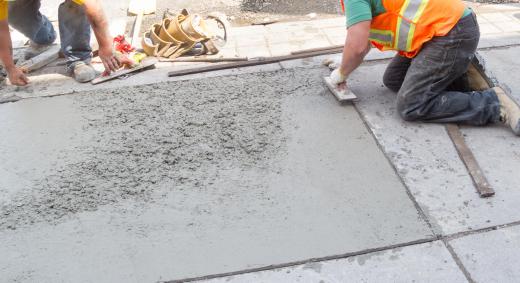Whisper grinding is a process of putting grooves into concrete road surfaces for the purposes of noise reduction. As metropolitan areas continue to struggle with noise pollution, more are looking at cost-effective ways to cut down unnecessary noise as much as possible. Whisper grinding is becoming a popular option for such communities.
In many cases, noise caused from the friction of tires on the roads can be a constant nuisance those leaving near major highways must learn to deal with. The traditional way of dealing with highway noise has been to construct tall walls, usually at least 15 to 20 feet high, as a barrier between those roadways and high-density residential areas. However, these walls do not reduce noise; they merely deflect it.

Due to the fact that the walls can be very expensive to construct and treat the symptoms rather than the cause of the problem, many community planners and traffic engineers have looked for other ways to deal with the problem. One of those ways which shows great promise is whisper grinding. Many different states have investigated its effectiveness since the beginning of the 21st Century.

The major difference between traditional concrete surfaces and those treated with a whisper grinding technique is the way the texture of the pavement is manipulated. Traditional concrete has what is known as a positive texture, which means bumps rise up from the main elevation of the surface. Pavement that has been subjected to whisper grinding has a negative texture.
The negative texture created by whisper grinding creates air pockets between the ridges. This air serves as a buffer, helping absorb the sounds created by the normal movement of tires across the surface. If done correctly, whisper grinding can help treat the problem of highway noise right at its source -- where the rubber meets the road.
A study by the Arizona Department of Transportation found that whisper grinding techniques reduce the noise by three to five decibels. Though this may not sound like a significant improvement, traffic engineers say a three decibel reduction in noise is roughly equivalent to reducing the traffic count on a highway by half. For example, if a normal highway has 200,000 vehicles travel on it per day, with whisper grinding, it would be like only 100,000 vehicles use it per day.
In addition to quiet pavement, or at least quieter pavement, whisper grinding can also help in another way. Though many may believe a grooved road surface would decrease the smoothness of the ride, the opposite appears to be true. In fact, the Arizona study calls the surfaces done with whisper grinding the quietest and smoothest ever constructed in the state.
